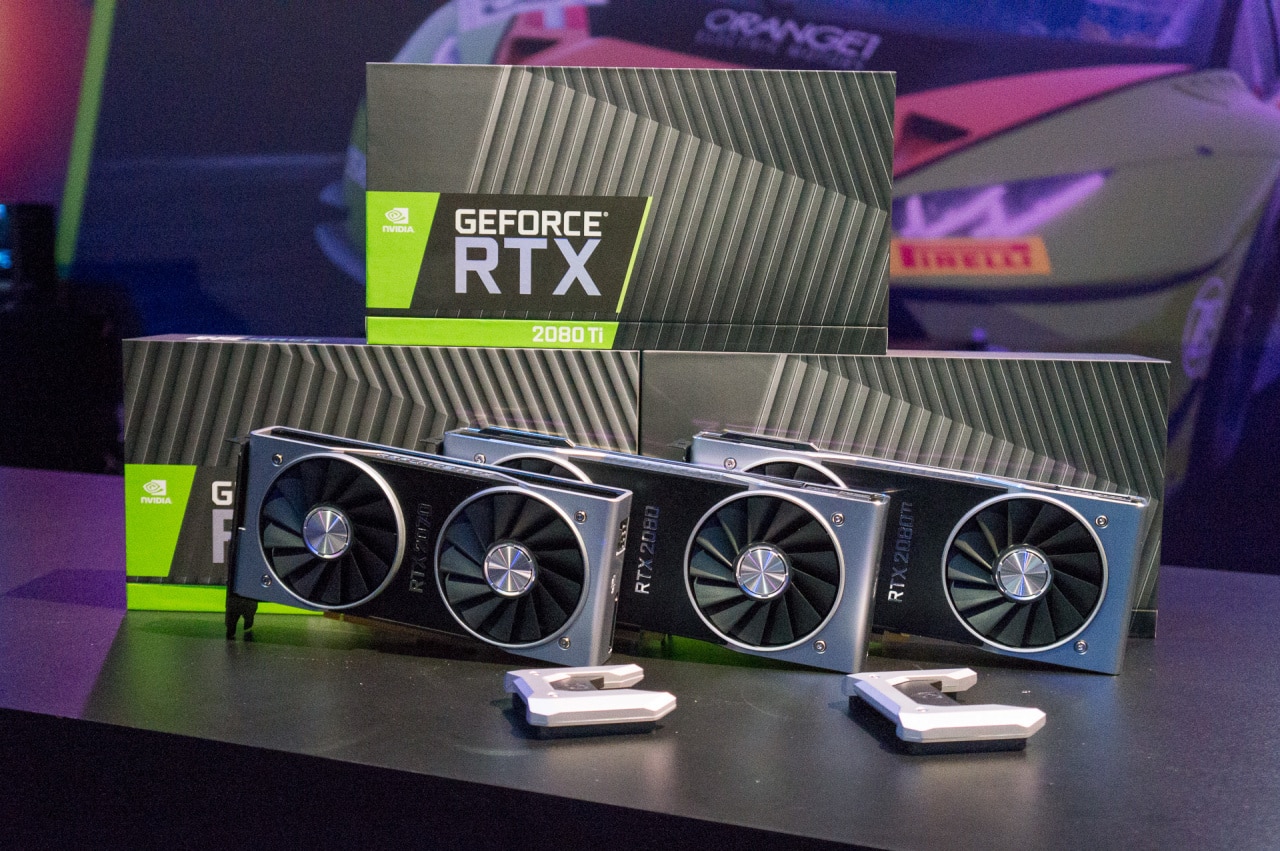Today’s event behind closed doors with technical presentations is over and now the editors are eagerly waiting to be able to deliver a hearty test on the next generation Geforce. Now tonight, however, we have been given the green light to give a first insight into the performance of the upcoming RTX 2080.
In a presentation image, Nvidia shows how the model compares to the long-running Geforce GTX 1080, which is based on the Pascal architecture. With the resolution 4K UHD and the same graphics settings, it is about an increase of around 35 to 60 percent depending on the game title or just under 50 percent better performance.
High resolutions are here to stay and according to Nvidia, the Geforce RTX 2080 should be able to deliver over 60 FPS in 3,840 x 2,160 pixels (4K UHD) with HDR turned on in modern AAA titles. This is an achievement that is delivered in titles that do not support Turing’s new features, where several will offer performance improvements in games that support these.
Computing power: Geforce RTX 2080 against GTX 1080
CUDA cores | GPU Boost | Computational power | Difference | |
|---|---|---|---|---|
Geforce RTX 2080 | 2 944 st. | 1 710 MHz | 10 068 GFLOPS | +13,5% |
Geforce GTX 1080 | 2 560 st. | 1 733 MHz | 8 873 GFLOPS | – |
While SweClockers currently cannot go into details, it is enough to look at the specifications to see that Turing as an architecture is significantly improved, where Geforce RTX 2080 despite its real performance increase “only” has 13.5 percent higher theoretical computing power.
► Nvidia Geforce RTX 2000 series with “Turing” architecture and specifications for RTX 2080 Ti, RTX 2080 and RTX 2070
Another part of the equation that is worth mentioning is that the Geforce RTX 2080 uses the completely new memory technology GDDR6. This means that the model, despite the same memory bus as its predecessor, has a theoretical bandwidth of 448 GB / s, up from 320 GB / s for GTX 1080 in standard version.
Significant in this context is that the newcomer’s increased performance has a price in the form of a higher specified TDP value of 215 W – almost 20 percent higher than GTX 1080. A performance increase of close to 50 percent, however, means that Turing will be a more energy efficient architecture than Pascal as already excels on that front.
Powered by Turing’s Tensor Cores, which perform lightning-fast deep neural network processing, GeForce RTX GPUs also support Deep Learning Super-Sampling (DLSS), a technology that applies deep learning and AI to rendering techniques, resulting in crisp, smooth edges on rendered objects in games.
However, Nvidia believes that the Geforce RTX 2080 is twice as fast as the GTX 1080, which is attributed to a completely new technology for anti-aliasing. This goes by the name DLSS which is short for “Deep Learning Super-Sampling” and should deliver similar results as Nvidia’s Temporal Anti-Aliasing (TAA).
In honor of the day, Nvidia also takes the opportunity to talk about upcoming news in Geforce Experience. It is exclusively about Ansel, which receives support for ray tracing with the new RTX 2000 series, image scaling and new filters. Another big news that is added is that Ansel will now also work in games that lack built-in support for Ansel.
The launch of Geforce RTX 2080 Ti and RTX 2080 will take place on September 20, with starting prices from 999 and 699 dollars, respectively, or the equivalent of 7,900 and 11,300 kronor including VAT. Little brother Geforce RTX 2070 will be launched in October from 499 dollars or about 5,700 kronor with Swedish VAT.















